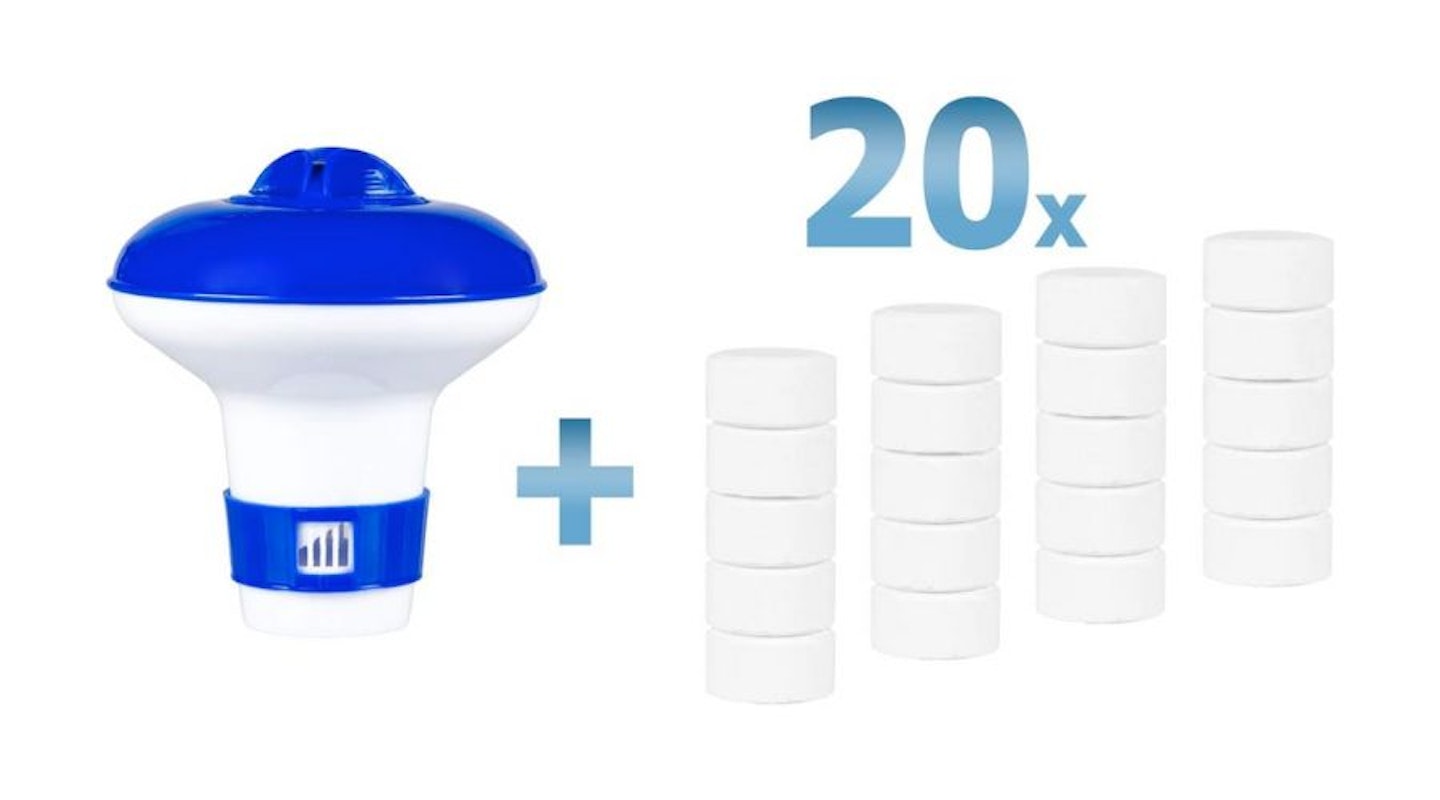We'd have been sceptical if you had asked us a couple of years ago about the best cold water therapy tubs and ice baths. After all, the health and fitness industry is dynamic. Trends often emerge rapidly on a wave of hype and disappear as the tide of unmet promises and unsubstantiated claims drags them back into obscurity. Ice baths and recovery pods could have easily been part of this pattern, but they have yet to fall foul. Why? Because of the rarest of things - scientific backing and a substantial application history.
Taking a dip in chilly water has a proper name - Cold Water Immersion, or CWI. It has a long legacy - the Ancient Greek philosopher Hippocrates used to sound off about its benefits, and there's some good evidence that the Roman Empire was also fond (no surprise, given their bathing culture). However, CWI, in the sporting context, had its first recorder use in the 1930s and has only grown in popularity and scientific backing.
Studies have shown that CWI - which requires water temperature below 15°C - can dial down inflammation, ease muscle soreness, speed up recovery, and boost your performance. It's shown to improve sleep, and it's also a boon to circulation, getting that blood flow going to bring fresh oxygen and nutrients to your worn-out muscles, making the recovery game even more potent - and as any gym rat will tell you, recovery is the MVP for hitting your fitness goals.
The best cold water therapy tubs at a glance:
• Best recovery tub: Polar Recovery Tub Portable Ice Bath - View on Amazon
• Best four-layer recovery tub: The Cold Pod Ice Bath Tub - View on Amazon
• Best recovery kit: Lumi Recovery Pod Portable Ice Bath - View on Lumi
• Best two-person recovery tub: Nutrality Ice Bath & Recovery Tub 900L - View on Amazon
There's another side to ice bath popularity, and that side is a Dutchman by the name of Wim Hof. Also known as The Iceman, Hof has gained notoriety for his record-breaking extreme cold endurance feats. He attributes his endurance to his breathwork technique, the Wim Hof Method (WHM). Though some of Hof's more outlandish health claims cause debate within the scientific community, WHM has popularised controlled breathing, meditation, and cold water therapy, transitioning from a niche concept to a mainstream practice in health, fitness, and well-being communities.
If you have a bath or a large empty vessel, like a (clean) trough or bin, you can try out cold water therapy to see if you respond to the treatment. However, a dedicated ice bath recovery pod is a worthwhile and sensible investment if you want to incorporate cold water therapy into your routine regularly. Filling your bath three times a week with enough water to fully submerge your body is expensive and time-consuming. With a dedicated pod, you fill it once every four weeks (so long as you add bromine). And thanks to their insulated shells, they can hold their temperature for long periods.
Below, we've brought together the best ice baths available. Read on to see the best and pick the right one for you.
The best cold water therapy tubs
Best recovery tub
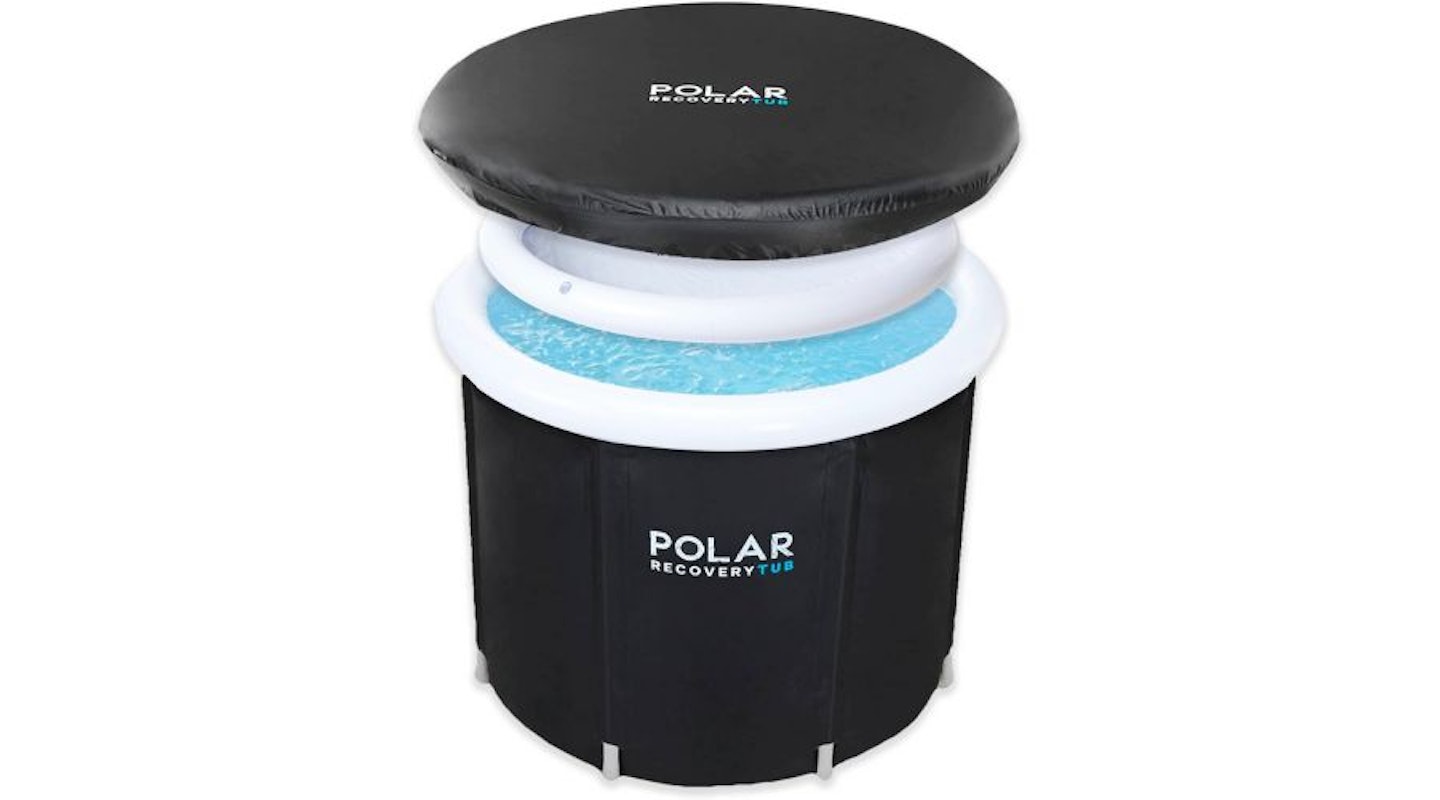 Amazon
Amazon The Polar Recovery Tub is an excellent pod that gives you all you need to start enjoying the benefits of cold water therapy and CWI. It's sized for anyone up to 6.7ft and is wide enough to sit on the floor with your legs crossed. The capacity is over 300 litres, but you'll only need about half to immerse yourself, thanks to displacement.
It has a layered shell that insulates and protects, while legs and an inflatable top lip keep the tub's shape. There's a lid and cover for keeping debris out, too, so you can set it up in the garden and not worry about bits getting into the water. A tap sits at the bottom to allow you to drain it when water change time comes along.
Pros
- Affordable price
- Collapsible
- Well made
Cons
- It's tricky to get it perfectly circular for the cover to fit neatly - as with all tubs like this.
| Dimensions | 85 x 85 x 75cm |
| Weight | 3kg |
| Capacity | 320L |
| Colour | Black |
Best four-layer recovery tub
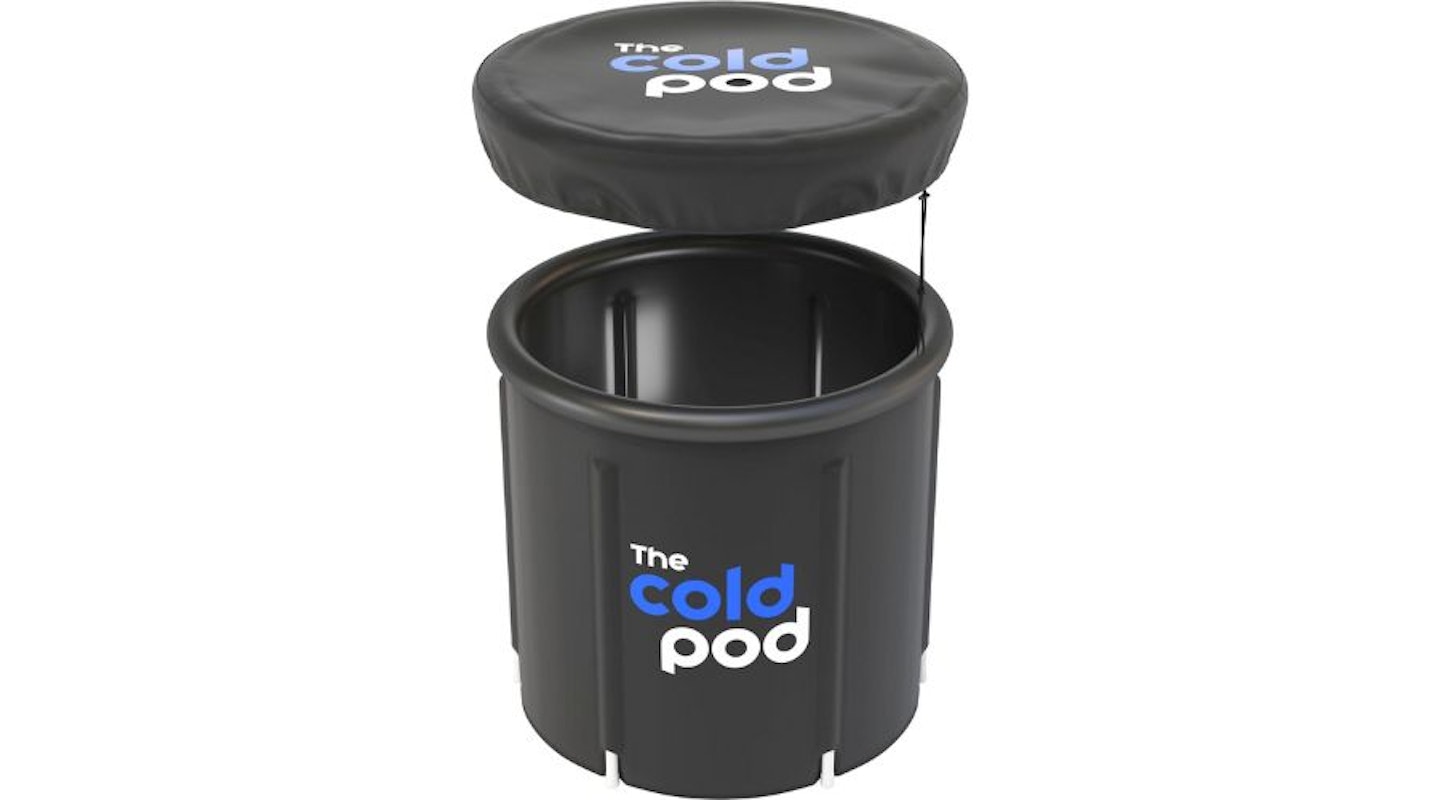 Amazon
AmazonThe Cold Pod is great for those wanting a slightly thicker-skinned recovery tub. It has four layers, rather than the three carried by most, giving it more strength. Otherwise, it is like the other options listed here, as it has an inflatable top to keep shape and a drainage tap. Like all tubs of this size, it's suitable for individuals up to 6.7ft, and its ample width enables comfortable seating on the floor.
Pros
- Four layer walls
- Easy to set up
- Affordable
Cons
- Tricky to get it perfectly circular for cover to fit neatly - as with all tubs like this
| Dimensions | 75 x 75 x 75cm |
| Weight | 4.23kg |
| Capacity | 439L |
| Colour | Black |
Best recovery kit
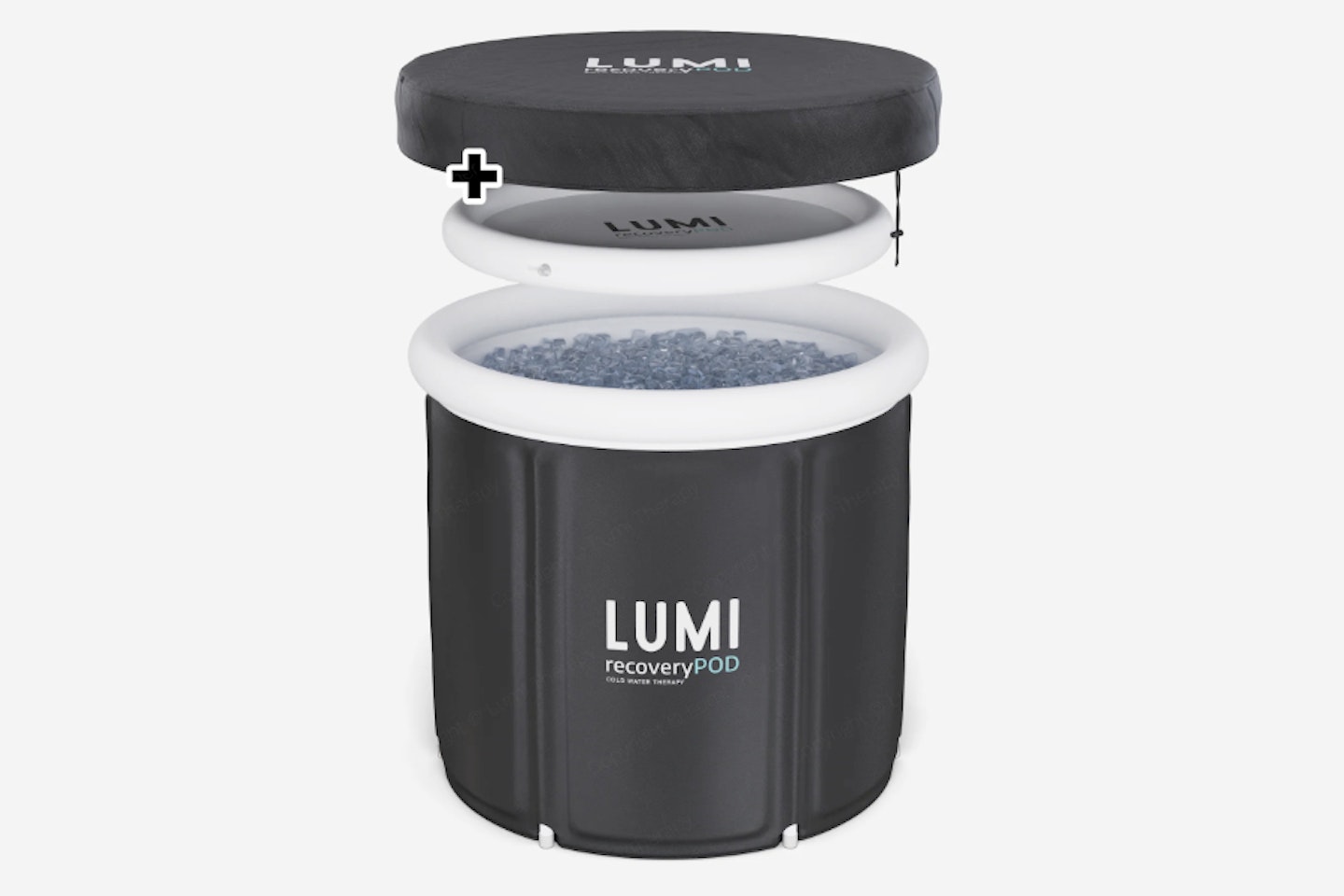 Lumi Therapy
Lumi Therapy lumitherapy.co.uk
When we reviewed the Lumi Recovery Pod, we praised its robust design featuring three-layer insulated walls, ensuring stable water temperature and durability against wear. Its simplicity, relying on six vertical legs and water pressure, makes it compact when stored and sturdy when in use.
The Thermo Lid and All Weather Cover protect against elements and debris, with inflation facilitated by an included pump. The 320-litre capacity requires around 160 litres for use. Lumi offers a Cold Club Starter Pack with a thermometer, cleaning pads and introductory cold water therapy PDF for those new to the process.
Pros
- Quality materials
- Simple but effective design
Cons
- Tricky to get it perfectly circular for cover to fit neatly - as with all tubs like this
- Stock on Cold Club starter pack can be patchy
| Dimensions | 80 x 75cm |
| Weight | 3.5kg |
| Capacity | 320L |
| Colour | Black |
Best two-person recovery tub
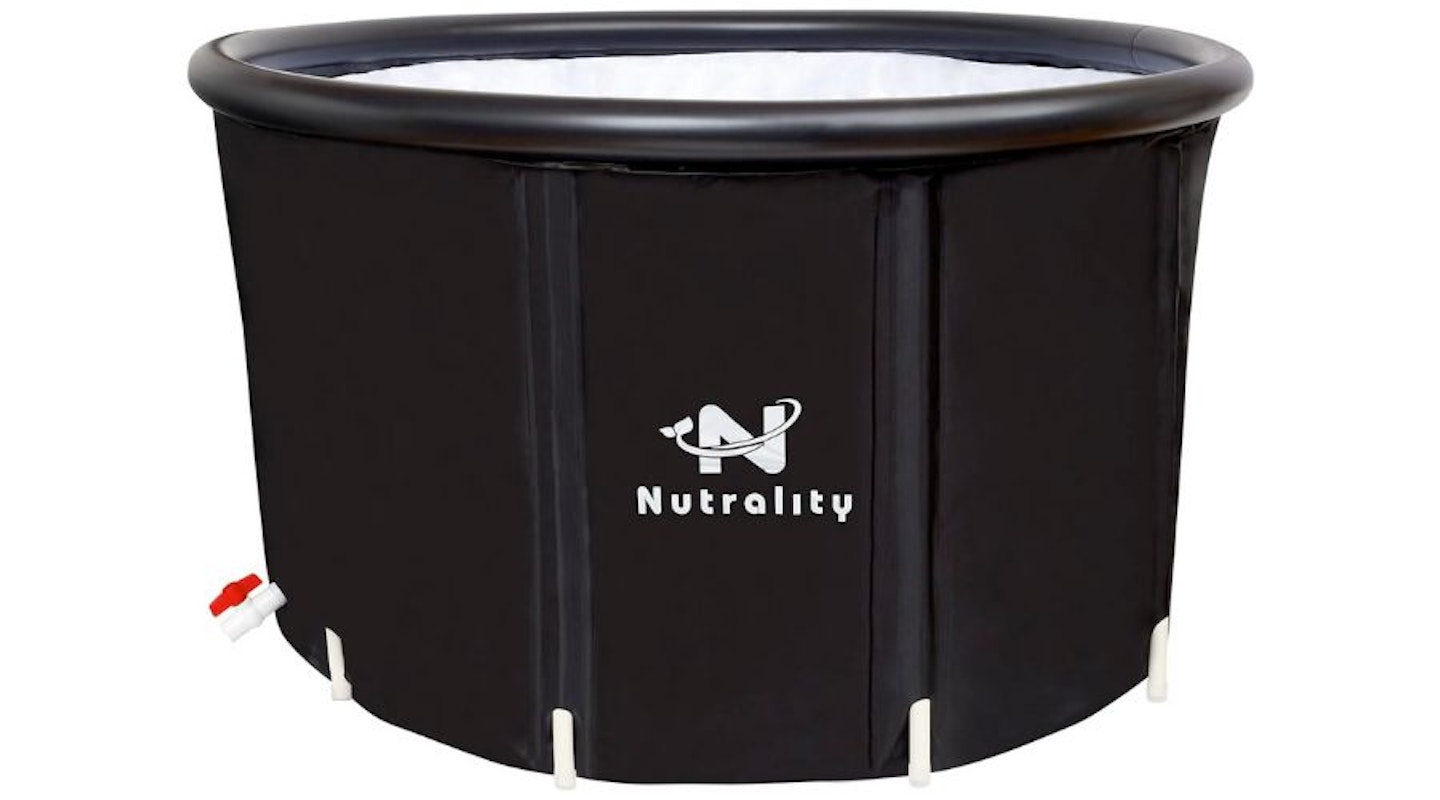 Amazon
Amazon Most one-person recovery tubs are 320 litres, which is enough for one person. This Nutrality Ice Bath & Recovery Tub has over double that, clocking in at 900 litres. This benefit means that one person can enjoy more space or can be joined by a partner looking to reap the benefits of cold water therapy. It has layered insulated walls and a drainage tap and comes with a cover.
Pros
- Big enough for two
- Strong build
Cons
- Tricky to get it perfectly circular for cover to fit neatly - as with all tubs like this
- Bromine will be required to make economic sense with the amount of refilling needed
| Dimensions | 75 x 120cm |
| Weight | 4.14kg |
| Capacity | 900L |
| Colour | Black |
Best budget recovery tub
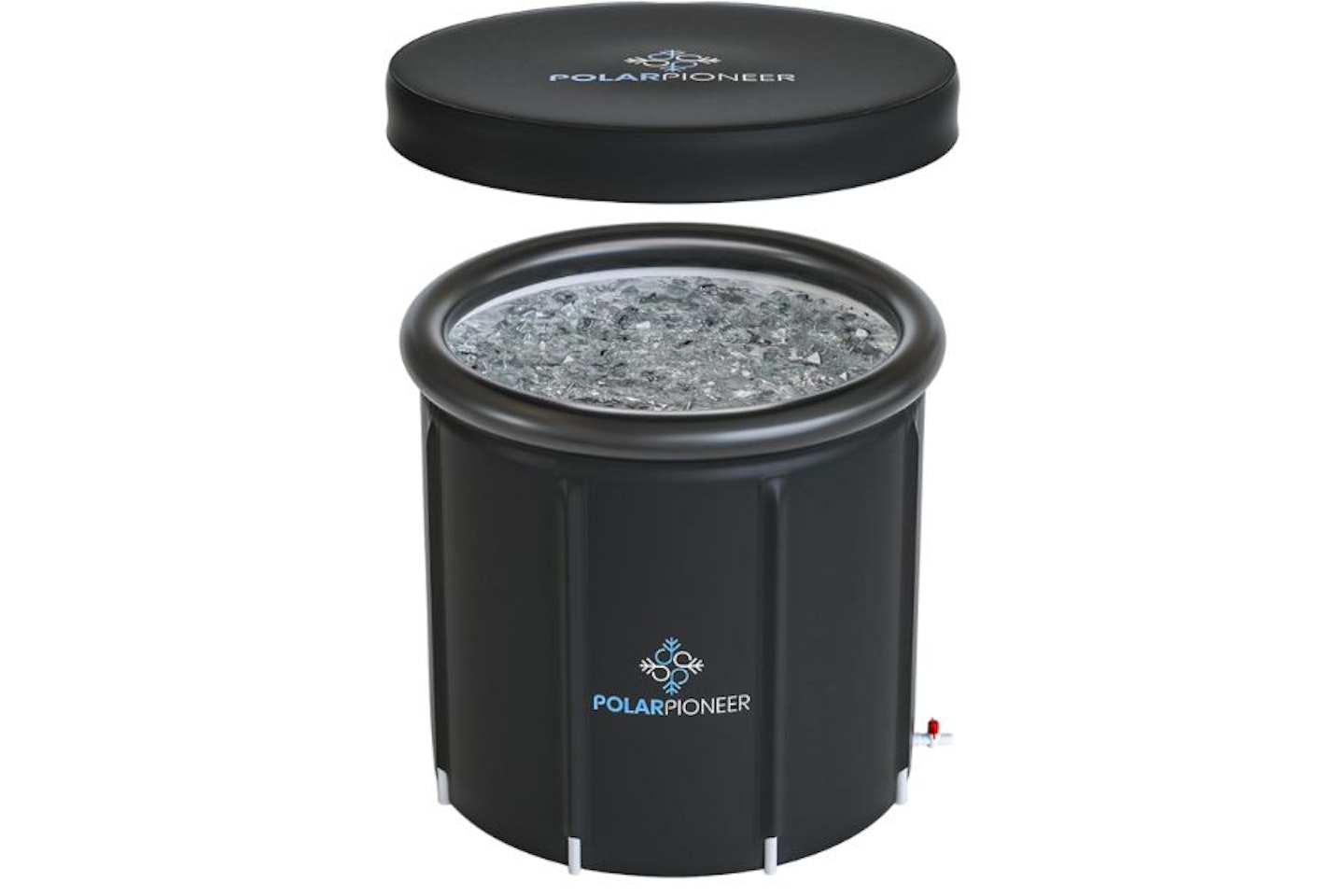 Amazon
Amazon This 360L PolarPioneer Cold Plunge tub is designed as a swift and effective recovery aid for athletes and fitness enthusiasts alike. Simply add ice and cold water to alleviate inflammation, soothe muscle discomfort and accelerate recovery times. The tub itself is made from durable materials and is built for regular use. Featuring a reinforced base, sturdy handles and a promised 'leak-proof' design, the PolarPioneer tub is perfect for outdoor recovery.
Pros
- Made with durable, high-quality materials
- Spacious interior that can accommodate individuals of all sizes
- Designed for on-the-go ease and portability
Cons
- Some reviewers reported it leaking from the seams after extensive outdoor use
| Dimensions | 75 x 75 x 70cm |
| Weight | 3.54kg |
| Capacity | 360L |
| Colour | Black |
The best cold water therapy tub accessories
Bromine is like chlorine but kinder on your skin. It will allow you to keep water in the Recovery Pod for weeks rather than days - an essential, along with the floating dispenser.
Pros
- 20 tablets will last a long time
Cons
- Bromine may irritate some sensitive skin
Perfect for keeping an eye on the water temperature, which you can use to dictate the length of cold water therapy sessions.
Pros
- It floats around and tells you the temperature - perfect!
Cons
- None
Tips for cold water therapy
If you want to get the most out of cold water therapy, here are a few tips we picked up when our deputy editor spent a month testing the process.
• Keep your arms out to make things easier; dip them in for an added challenge.
• Use bromine to save water.
• Get a floating thermometer.
• Use a timer.
For more tips, read our full article 'Get your arms in, you casual' and seven other top tips for cold water therapy.
How long should I stay in cold water immersion therapy?
The ideal cold water immersion therapy duration depends on several factors, including your experience, water temperature, and goals. There are no hard and fast rules, only guidelines.
Important points:
• Listen to your body and never force yourself: Get out if you experience severe discomfort, numbness, or difficulty breathing.
• Warm up afterwards: Avoid staying in the cold water for too long to prevent hypothermia.
• Consult a doctor before starting cold therapy: If you have any underlying health conditions, pregnancy, or concerns, seek professional advice first.
First and foremost, you must always consider the water temperature. A good rule of thumb is to use the temperature as a direct measure of maximum plunge duration - for example, 10°C means a maximum of 10 minutes, whereas 3°C reduces the time to a maximum of three minutes.
Outside of this, it's about experience. For beginners, starting out with shorter sessions is recommended, even if the water temperature is on the warmer side. You can extend the time as you adapt to the practice and improve endurance. Experienced cold water therapy users can aim for 15 minutes.
If your primary goal is to reduce muscle soreness and aid muscle recovery, ten to 15 minutes is a sweet spot. This means adjusting the water temperature to suit - we do not recommend adding ice for such goals, as this will significantly reduce the time you can stay immersed. Short bursts can do the trick for mental benefits, such as alertness. Two to three minutes will do, meaning you can have colder water.
How does cold water therapy help, what are the benefits and is it good for you?
Cold water immersion therapy can help with many things with both body and mind, including recovery, circulation and mood. Research is ongoing, but here are some of the potential benefits:
• Reduces inflammation: Cold constricts blood vessels, reducing muscle inflammation and post-exercise stiffness.
• Boosts circulation: Enhanced blood flow aids in removing waste products, delivering oxygen, and promoting faster recovery.
• Improves mood: Cold water induces the release of norepinephrine, elevating mood and addressing symptoms of depression and anxiety.
• Increases alertness: Like a boost from coffee, cold water immersion can heighten energy levels and cognitive function.
• Numb pain: Cold activates the body's natural pain-killing system, releasing endorphins and diminishing pain signals.
• Boosts immune system: Cold water exposure may increase white blood cell activity, potentially enhancing the immune response.
• Improves sleep: The calming effect and lowered core temperature post-immersion promote deeper, more restful sleep.
• Enhances overall well-being: Regular cold water therapy may reduce stress hormones, improving general well-being and vitality.
While ongoing research explores these benefits, current evidence suggests that the potential advantages make cold water therapy worthwhile, particularly for those leading active lifestyles or managing pain conditions.
What is the disadvantage of cold water immersion?
Though cold water is safe for many, the practice has some disadvantages. Some cons are minor - for example, some people find the process unpleasant or struggle to access a tub to make it a regular part of their routine.
However, some disadvantages are far more severe. They are as follows:
Cold water shock and hypothermia: Sudden immersion in cold water can trigger a response that can cause rapid breathing, gasping, and increased heart rate, potentially leading to panic and aspiration. Prolonged exposure to cold water leads to a dangerous drop in body temperature, causing confusion, shivering, slurred speech, and eventually unconsciousness.
Tips for avoiding such instances include acclimatising gradually to the water, practising breathwork before and during immersion, and limiting exposure (especially when new). It's also worth having someone nearby when trying cold water for the first time and starting with warmer water, between 10°C and 15°C.
Additional steps specific to avoiding hypothermia include ensuring that you have eaten beforehand and haven't recently consumed alcohol. Have warm clothes to hand for when you get out to help you regain temperature as quickly as possible.
If you feel uncomfortable at any point, even before experiencing hypothermia signs, get out of the water immediately. Don't push yourself beyond your limits.
Heart issues and aggravation of existing conditions: The shock of the cold can strain the heart, causing arrhythmias or more severe problems in individuals with pre-existing heart conditions.
If you have any underlying health conditions like diabetes, heart disease, or thyroid problems, consult your doctor before starting cold therapy.
Other potential risks: Skin irritation and muscle cramps can sometimes occur.
William Lobley is the Editor for What's The Best. Here, he oversees, curates and researches listicles and reviews as many products as his home office can handle.
He has spent nearly five years writing about tech, audio, outdoors and fitness and has reviewed everything from smartphones to ice baths. In addition, he's well-versed in sniffing out the best deals and savings the internet offers.
When not at his desk writing, reviewing or deal-hunting, he'll be relaxing with Japanese crime novels, bingeing some classic anime, strolling the countryside or at the gym listening to the heaviest metal Spotify has to offer.
Subscribe to the What’s The Best Newsletter to keep up to date with more of the latest reviews and recommendations from the rest of the What’s The Best team.

